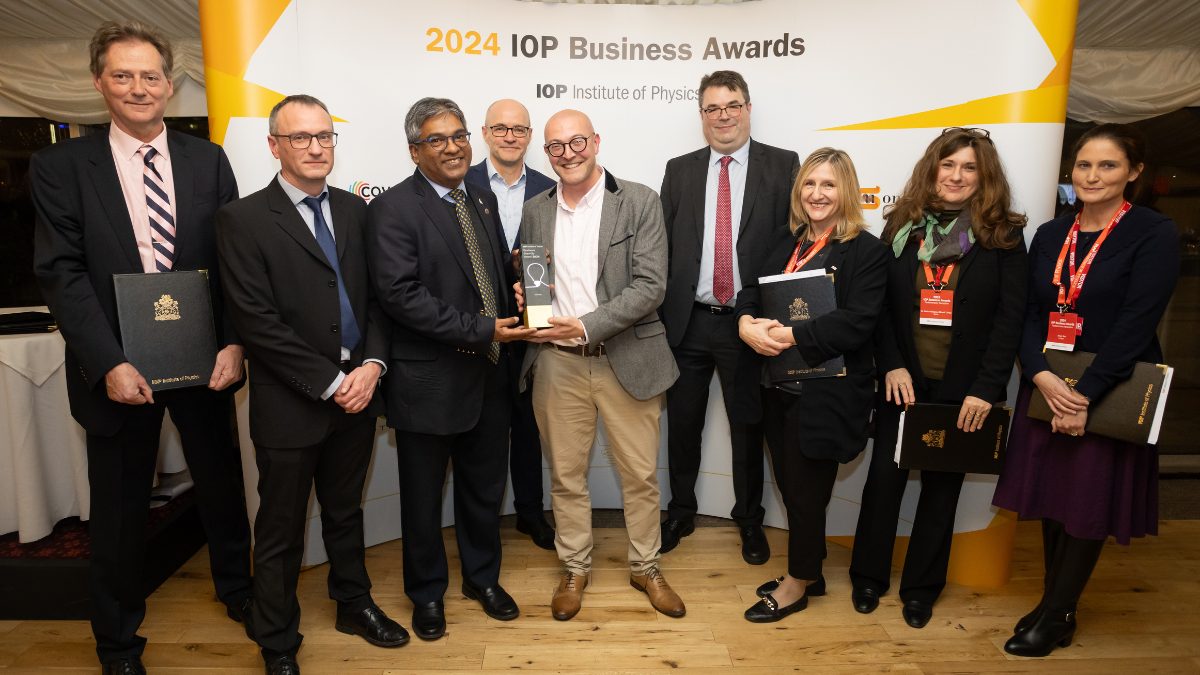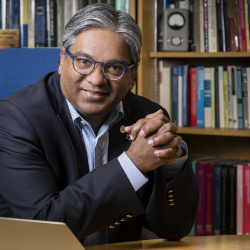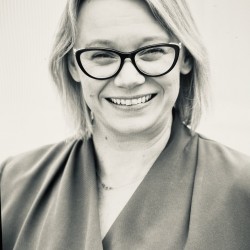Silveray, the digital X-ray film company and Surrey spinout, wins coveted Institute of Physics award with a new approach to X-ray imaging
Innovation in X-ray technology could be key to detecting cancer more accurately than ever before, says the CEO of a startup that has won this year's Institute for Physics Business Startup Award.

Silveray, a spinout from the University of Surrey, has invented a flexible, reusable, and cost-effective Digital X-ray Film (DXF) that is transforming industrial radiography for weld inspection. In the long term, the ground-breaking technology offers the promise of more accurate diagnostic X-ray imaging at lower radiation doses for earlier and more accurate tumour detection, leading to better patient outcomes.
Silveray's nanoparticle-based material for X-ray imaging is made of a semiconductor ink that is coated on to a flexible electronic backplane with pixels that captures the X-ray image. Unlike the current X-ray market status quo, Silveray's technology enables enhancements in image quality on a physically flexible medium at a cost-effective price point.
The X-ray imaging sector has seen relatively few revolutionary innovations since the advent of digital imaging. Our vision at Silveray is to develop technology that disrupts this way of thinking by creating financially sustainable, reusable, physically flexible Digital X-ray Film (DXF).Dan Cathie, CEO and Co-Founder of Silveray
We know there is more to be done but this award from the Institute of Physics is a recognition of the valuable potential of our technology for the industrial non-destructive test (NDT) market. Furthermore, our vision is to become game changers for mammography and other areas of X-ray imaging with our high-sensitivity, high-resolution, Digital X-ray Film invention.
This award comes as fantastic recognition for the team at Silveray following the close of our recent funding round, led by Northern Gritstone.
Silveray was founded in 2018 by Professor Ravi Silva, Director of the Advanced Technology Institute (ATI) at the University of Surrey. Since then, Silveray and the ATI have painstakingly worked on the technology that incorporates high-Z elements (heavy atoms known for their ability to absorb X-rays) into semiconductor polymer materials, creating flexible X-ray detectors that are both sensitive and adaptable to curved surfaces.
###
Notes to editors
Dan Cathie and Ravi Silva are available for an interview; please contact mediarelations@surrey.ac.uk to arrange.
Featured Academics
Media Contacts
External Communications and PR team
Phone: +44 (0)1483 684380 / 688914 / 684378
Email: mediarelations@surrey.ac.uk
Out of hours: +44 (0)7773 479911

